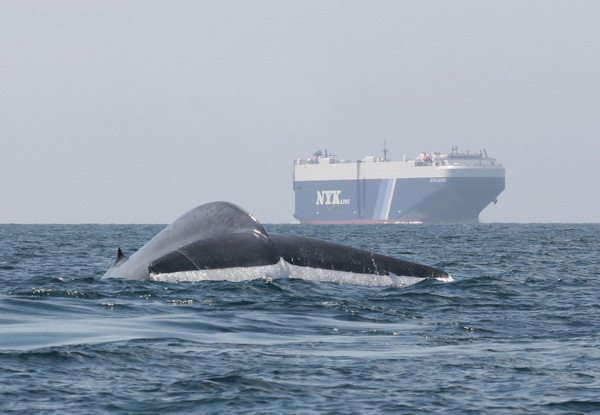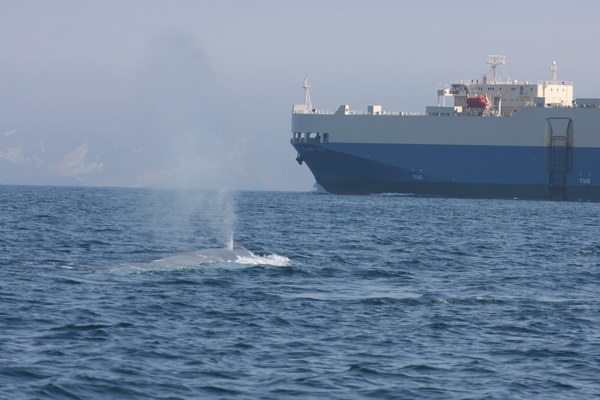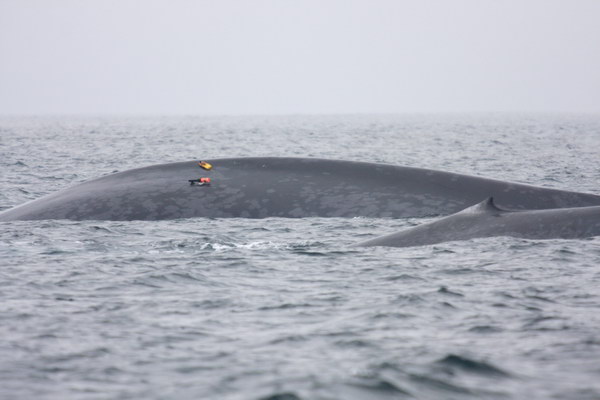Cascadia Research has been conducting work to better understand the causes and potential solutions to the mortality of blue and other large whales due to ship strikes (see publications on day night differences in diving behavior, observations from ships transiting the west coast, and case study of a near vessel whale collision). This issue became a priority after at least five blue whales were killed in fall 2007 as a result of ship strikes in the southern California area (see publication on blue whale ship strike mortality off California, March 2010). Three of these animals were discovered in the vicinity of the Santa Barbara Channel. This level of mortality was far higher than had been seen in any previous year and if there were additional deaths of animals that did not wash up, could be significant to this endangered species.
Only a small proportion of large whale mortality is documented as strandings because most large whales sink or do not wash ashore. True mortality has been estimated to be at least ten times higher than suggested by the documented strandings. See a recent poster presented at the 2022 Biennial Marine Mammal Conference on 2 known fatal strikes where carcasses were never recovered.
Ship strikes could very well be a significant factor preventing the recovery of blue whales. This species has not shown the type of recovery that other species like gray, humpback, and fin whales have shown since the end of large scale commercial whaling. In the eastern North Pacific, blue whale numbers have not increased and by some measures have decreased. Cascadia Research in collaboration with Scripps Institution of Oceanography and with the support of the Channel Islands National Marine Sanctuary and National Marine Fisheries Service initiated research in 2008 on some of the factors possibly responsible for this mortality.
Our observations and the data from these tags will help us address several of our key objectives:
- Determine how animals are distributed in relation to shipping routes and what shifts in shipping lanes might reduce the incidence of ship strikes
- Examine the behavior of blue whales in the shipping lanes including documenting their specific feeding and diving patterns in this area.
- Use GPS tags to provide detailed movement patterns of the whales in and around the shipping lanes during the day and throughout the night (something we could not do before).
- Monitor whale reaction to ship close approaches (less than 1nmi) including to <200m of our tagged whales to determine how whales react to ships and gain insights into how different strategies like slowing ships would alter the incidence of ship strikes.
Most recently we have worked to apply our research finding to management solutions. See the Joint Working Group report (June, 2012), Vessel Strikes and Acoustic Impacts: Gulf of the Farallones and Cordell Bank National Marine Sanctuaries, for an example of this work.


